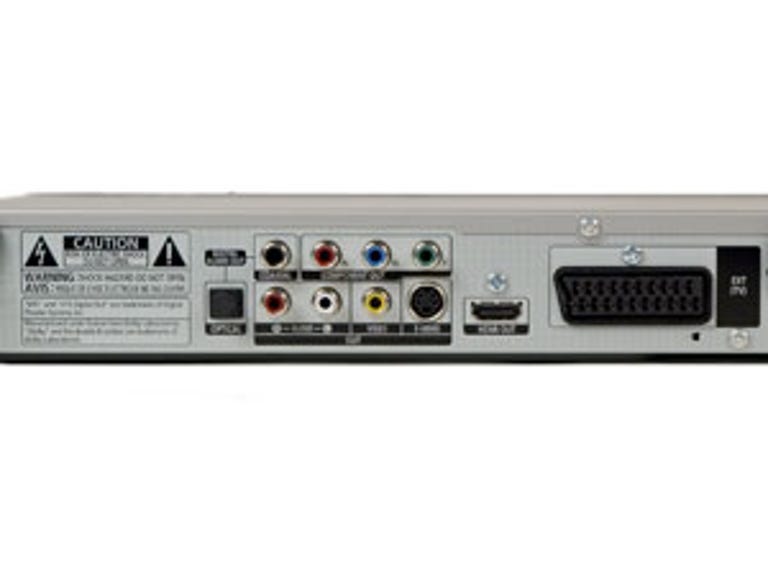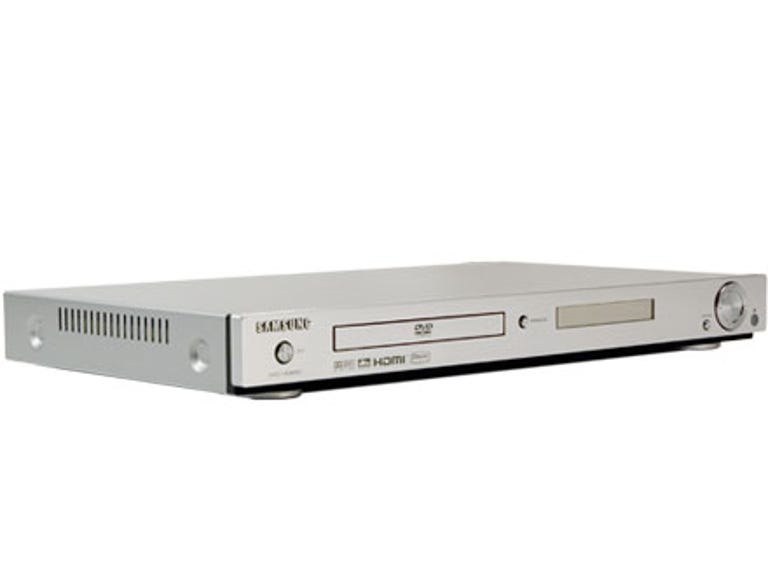 Why You Can Trust CNET
Why You Can Trust CNET Samsung DVD-HD870 review: Samsung DVD-HD870
If you don't want to spend a fortune upgrading your movie collection to high-definition discs, consider the Samsung DVD-HD870 -- for around £50 it will do a good job of upscaling your standard-definition DVDs to near HD quality
With all the bluster about HD DVD and Blu-ray, you could be forgiven for thinking that it was the end of the road for the humble DVD player. In reality, however, the DVD player has plenty of life left in it yet.
The Good
The Bad
The Bottom Line
Slow sales of the high-definition disc formats prove that people aren't in any particular rush to ditch DVD, but the ageing format is not without its downsides. It was never really designed for today's large-screen televisions and, as such, picture performance can sometimes be a little lacklustre.
Upscaling DVD players like Samsung's DVD-HD870 try to offer a solution, by squeezing the best possible picture quality out of DVD.
Design
The player itself is pretty funky. It's around half the depth of a standard DVD player, which is a mixed blessing really -- its smaller size means stacking anything on top of it isn't ideal, but it does take up a lot less space on your shelf or TV stand.
There is a simple display on the front of the player, but it doesn't provide much information and looks fairly basic. The rest of the front panel is dedicated to a little four-way controller for play, pause, previous and next track navigation, and of course the disc tray.

The remote control is the usual Samsung style -- it's around half as long as the remotes that come with its televisions, but the same shape, with the chunky bottom end. It's not the most attractive design and it's not brilliantly ergonomic, but let's face it -- you won't be conducting an orchestra with it, so it's not the end of the world.
Features
The key feature on any DVD player that will be connected to an HD Ready TV is the ability to output a progressive scan signal. If a DVD player can do a decent job of creating a 576p image out of a 576i one, then the LCD can take that and stretch it to fit the high-resolution screen.
The Samsung DVD-HD870 will happily generate a progressive signal, but it also has scaling hardware that will create a high-definition picture up to 1080i. The difference between 576p, 720p and 1080i was negligible. The improvement in quality comes from the progressive scan option. We think this player will be best left at 576p, unless you have an older TV with poor quality video scaling, in which case bump it up to 720p.
DivX support is also included, which is always welcome. It enables you to download video from the Internet, burn it to disc and watch via this player. There is also support for DivX on demand, a service that allows you to 'rent' movies or buy them online. This is a nice idea, but in reality there isn't that much content available. We think it would be great if movie studios did allow content to be purchased in this way, as it offers all the advantages of DVD rental with all the immediacy of Internet delivery.
One of the downsides of this player is that it won't deal with high-definition DivX or MPEG-4 files. Given the presence of HDMI and component out it's a little silly that the player can't handle these file types.
Performance
In terms of usability, the HD870 is good
-- the menus are simple and the options aren't overwhelming. It's easy
to forget that with each new generation of technology, there are more
things to set up and more therefore more complications. DVD is
wonderfully simple, and this player keeps it that way.
We found commands from the remote control were a little slow to be actioned by the player. When you add this to the fact that the buttons don't have an especially positive feel to them, it can be very frustrating when you think you've selected a menu option but the DVD player disagrees.
We rather liked the picture from the HD870 -- on DVDs that have a good-quality image it looked great. During our viewing of some of our sample DVDs, there were times when the colours were vivid and there were no visible compression artefacts from over-compression. When this happens it's almost possible to forget you are watching something recorded in standard definition.
The upscaling is a nifty feature, as is the ability to hook this machine up via HDMI. The latter doesn't ensure quality by default, but when quality components are used (as they seem to be here) you can end up with a very good picture on your TV. Upscaling DVD players generally follow the 'garbage in garbage out' rule. If a DVD was well authored and the bit rate is nice and high, you will get an impressive picture. If the bit rate is low, or the mastering wasn't done properly, then all the artefacts will be magnified by your large-screen TV.
Conclusion
If you don't already have a HD DVD or Blu-ray player, getting an
upscaling DVD player with HDMI out is a really good way of getting the
very best quality from your collection without the need to buy all your
old films again.
You can find the Samsung DVD-HD870 for around £50 online. If you want to compare some alternatives the Denon DVD-1930 is a viable option, but it costs around £150 more. The advantage of the Denon is that it offers analogue 5.1 out, which is a handy addition if you want to hook up your DVD player to an AV amp with only analogue inputs.
Edited by Jason Jenkins
Additional editing by Kate Macefield
